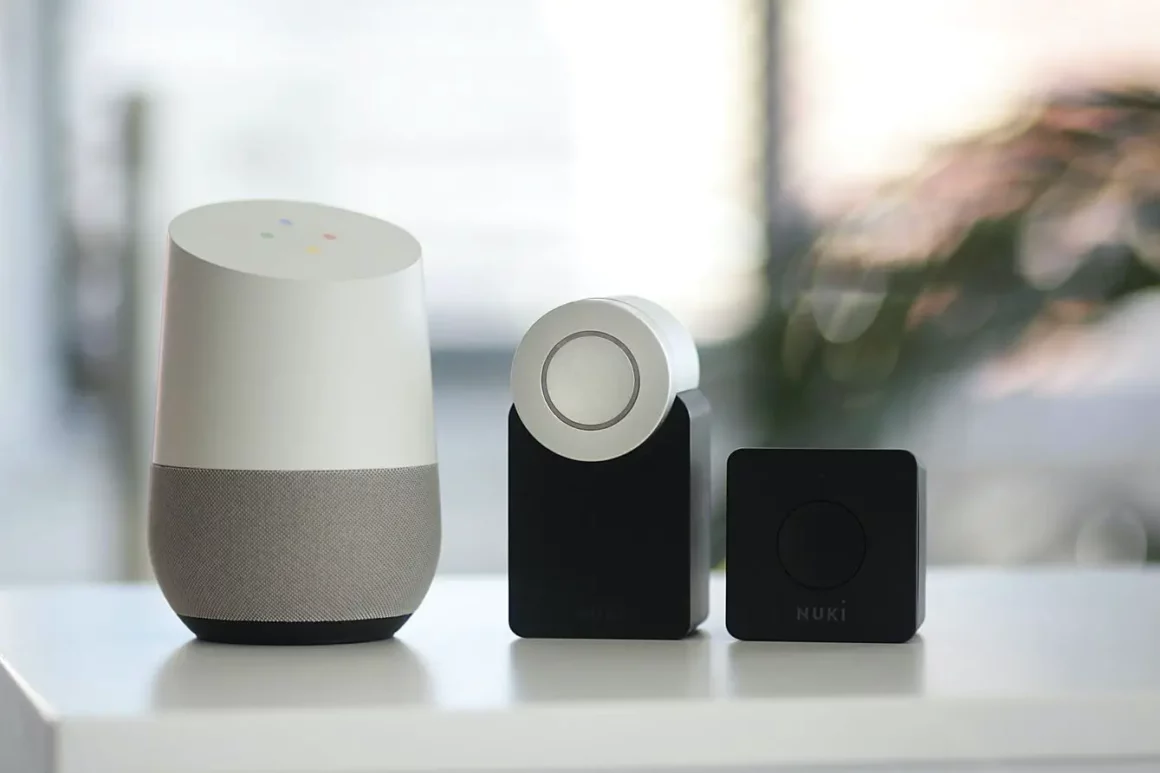Introduction
In an era where technology is rapidly reshaping our lives, the concept of ‘smart homes’ stands out as a beacon of the future, already manifesting in our present. Smart homes, a subset of the burgeoning field of home automation, leverage advanced technology to enhance the comfort, convenience, efficiency, and security of our living spaces. These homes are equipped with interconnected devices and systems, ranging from smart thermostats to AI-powered security systems, all controlled with a simple tap on a smartphone or a voice command.
But what does this technological revolution really mean for the average homeowner? Beyond the glossy advertisements and futuristic promises, how do smart homes operate in the real world? This post aims to offer a reality check on smart homes. We will delve deep into the essence of home automation, assessing its benefits, challenges, and the practical implications of integrating these technologies into our daily lives. Join me as we embark on a journey to unravel the truths behind smart homes, separating the hype from the tangible impacts they hold in our quest for a more connected and efficient lifestyle.
Section 1: The Evolution of Smart Home Technology
The journey of smart home technology is a fascinating tale of innovation, evolving needs, and technological breakthroughs. It’s a story that mirrors the rapid advancements in technology and reflects our ever-changing lifestyle preferences.
The Beginnings: A Conceptual Framework
The origins of smart home technology can be traced back to the early days of home automation concepts in the 20th century. Initially, these were simple automated systems designed for convenience and energy efficiency, like automatic garage doors and thermostats. However, the real conceptual framework for smart homes began to take shape with the advent of the Internet and wireless communication technologies.
The Digital Revolution: Internet of Things (IoT)
The pivotal moment in the evolution of smart home technology came with the introduction of the Internet of Things (IoT). This digital revolution turned the concept of interconnected, remotely controlled devices from science fiction into reality. Suddenly, the possibility of controlling various home devices via the internet became not just plausible but practical.
Milestones in Smart Home Development
- Early 2000s: The emergence of home networks. This period saw the first steps toward connected homes, with devices like routers becoming household staples.
- Late 2000s: The rise of smartphones and mobile apps introduced a new level of control and accessibility for home automation systems.
- 2010s: Major tech companies entered the smart home market, introducing voice-controlled assistants and smart speakers, making the technology more user-friendly and integrated.
- Present: Today, we see a plethora of smart home devices, from smart locks and lights to AI-powered security systems and appliances, all interconnected for seamless operation.
The Impact of Technological Advancements
Each of these milestones marked a significant leap in how we interact with our living spaces. With advancements in AI, machine learning, and data analytics, smart home technology is no longer just about remote control but about creating an intuitive, learning environment that anticipates and adapts to our needs.
Looking Back and Ahead
As we reflect on the history of smart home technology, it’s clear that this journey is far from over. With each new development, we step closer to a future where our homes are not just places of residence but intelligent partners in our daily lives.
Section 2: The Current Landscape of Home Automation
In the dynamic world of technology, home automation systems have evolved from a niche luxury into a mainstream necessity for many. Today’s landscape of home automation is characterized by a rich ecosystem of interconnected devices and sophisticated systems, all aimed at enhancing the comfort, efficiency, and security of our homes.
The Breadth and Depth of Modern Home Automation
Modern home automation systems are no longer just about remotely controlling lights or thermostats. They encompass a broad range of functionalities and integrations. From managing energy consumption to providing unparalleled security features, these systems have become central to how we experience and interact with our living spaces.
Key Components of Today’s Smart Homes
- Voice-Controlled Assistants: Devices like Amazon Alexa, Google Home, and Apple HomeKit have become household names, acting as the central hub for controlling various smart home functions.
- Smart Security Systems: These include smart locks, doorbell cameras, and advanced home surveillance systems, offering real-time monitoring and alerts for unparalleled home security.
- Energy Management Tools: Smart thermostats and lighting systems like Nest or Philips Hue not only provide convenience but also contribute to significant energy savings.
- Entertainment Systems: Integration of smart TVs, streaming devices, and multi-room audio systems for an enhanced entertainment experience.
- Home Health Devices: Smart health monitoring gadgets that integrate with home systems, providing alerts and updates on health metrics.
The Role of IoT Devices
At the heart of home automation lies the Internet of Things (IoT). These IoT devices are the building blocks of a smart home, offering connectivity and intelligence to everyday appliances and systems. The range of IoT devices is ever-expanding, from basic sensors and switches to sophisticated robots and AI-driven appliances. They communicate and collaborate to create a cohesive and responsive smart home environment.
Connectivity and Integration: The Backbone of Automation
One of the most significant aspects of modern home automation systems is their ability to integrate various devices and platforms. Through Wi-Fi, Bluetooth, and other wireless technologies, these systems ensure seamless operation and control, offering homeowners the luxury of managing their homes through smartphones, tablets, or voice commands.
The Evolving Ecosystem
The current landscape of home automation is an evolving ecosystem, continually being enriched by advancements in technology and user experience design. As more manufacturers and developers enter the space, the possibilities for what a smart home can be and do are expanding, leading to a future where our homes are not just connected but truly intelligent.
Section 3: The Real Benefits vs. Challenges of Smart Homes
The allure of smart homes lies in the promise of a more convenient, secure, and efficient lifestyle. But with every technological advancement, there are challenges to consider. In this section, we’ll explore the real benefits and the challenges that come with smart home technology.
The Benefits: Why Homeowners are Embracing Smart Homes
- Enhanced Convenience: The most immediate benefit of smart homes is convenience. Being able to control various aspects of your home remotely or through voice commands simplifies daily tasks.
- Increased Security: Smart homes provide advanced security features. From real-time surveillance through cameras to smart locks and alarms, these systems offer peace of mind with enhanced security measures.
- Energy Efficiency: One of the significant advantages is energy saving. Smart thermostats and lighting systems help reduce electricity consumption, leading to lower utility bills and a smaller carbon footprint.
- Improved Accessibility: For elderly or differently-abled individuals, smart home technology can be life-changing, offering them greater independence through voice-activated controls and automated systems.
- Home Management Insights: Smart homes can provide valuable insights into your daily living patterns, helping you manage your home more efficiently.
The Challenges: A Realistic Perspective
- Complexity and Reliability Issues: The complexity of setting up and maintaining a smart home system can be daunting for some. Additionally, the reliability of these systems can be impacted by software bugs or hardware failures.
- Security and Privacy Concerns: As much as smart homes enhance security, they also raise concerns. The risk of data breaches and hacking remains a significant worry, given the amount of personal data these systems handle.
- Cost Implications: The initial setup cost of a smart home system, along with ongoing maintenance and updates, can be a financial burden for many homeowners.
- Dependence on Internet and Power: Smart homes rely heavily on internet connectivity and power. Any disruption in these can render the smart features non-functional.
- Interoperability Issues: Not all smart home devices and systems are compatible with each other, which can limit the functionality and efficiency of the smart home ecosystem.
Balancing the Scales
While the benefits of smart home technology are undeniable, it’s equally important to acknowledge and address the challenges they present. Understanding these aspects helps homeowners make informed decisions about integrating smart home technology into their lives. By doing so, they can enjoy the advantages while being aware of, and prepared for, the potential downsides.
Section 4: Smart Home Security: A Critical Examination
As smart homes become increasingly common, the security of these interconnected systems has emerged as a critical concern. In this section, we delve into the various security aspects of smart homes, addressing both the strengths and vulnerabilities, as well as the privacy concerns associated with them.
The Strengths in Smart Home Security
- Advanced Monitoring and Surveillance: Smart homes offer state-of-the-art security features like surveillance cameras, motion detectors, and doorbell cameras that provide real-time monitoring and alerts.
- Automated Locks and Alarms: Smart locks and alarm systems add an extra layer of security, allowing homeowners to control access to their homes remotely and be alerted instantly in case of any unauthorized entry.
- Integration with Emergency Services: Many smart security systems are now capable of integrating with local emergency services, ensuring a swift response in case of a break-in, fire, or other emergencies.
- Customization and Control: Users have the ability to customize their security settings according to their needs, which adds a personalized touch to home security.
The Vulnerabilities and Privacy Concerns
While smart home security systems offer numerous benefits, they are not without their vulnerabilities and privacy concerns.
- Risk of Hacking and Data Breaches: As with any internet-connected device, there is a risk of hacking. Smart home devices that are not properly secured can be vulnerable to cyber-attacks, leading to potential breaches of privacy.
- Data Collection and Surveillance: These devices often collect a vast amount of data, which raises concerns about how this data is used and who has access to it. The idea of constant surveillance, even in one’s own home, can be unsettling for some.
- Dependency on Internet and Power: The effectiveness of smart security systems is heavily reliant on stable internet connectivity and power supply. Any disruption can leave the home vulnerable.
Addressing the Concerns: Solutions and Best Practices
To mitigate these concerns, several solutions and best practices can be adopted:
- Regular Software Updates: Keeping the software of smart home devices updated is crucial for security. Manufacturers often release patches for known vulnerabilities.
- Secure Network Practices: Using strong, unique passwords, enabling two-factor authentication, and securing the home Wi-Fi network can significantly reduce the risk of cyber-attacks.
- Understanding Privacy Policies: Being aware of the privacy policies of smart device manufacturers and ensuring you are comfortable with what data is collected and how it is used.
- Choosing Reputable Brands: Opting for smart home devices from reputable manufacturers with a proven track record in security can offer greater assurance.
Smart home security is a balancing act between enjoying the conveniences of modern technology and maintaining privacy and security. By staying informed and taking proactive steps to secure these systems, homeowners can enjoy the benefits of smart homes while minimizing the risks.
Section 5: The Financial Angle: Cost and Savings
When considering the shift to a smart home, one of the most pivotal factors for homeowners is the financial aspect. This includes both the initial investment required to set up a smart home and the potential long-term savings. Let’s delve into the cost analysis and the potential return on investment (ROI) that smart home technology offers.
Initial Investment: Understanding the Costs
- Purchasing Smart Devices: The initial cost largely depends on the type and number of devices you choose. Basic smart home setups can start with simple smart plugs and bulbs, while more advanced systems may include comprehensive security systems, smart thermostats, and sophisticated home entertainment systems.
- Installation Costs: Some smart home devices require professional installation, especially complex systems like smart security or integrated home automation systems.
- Upgrading Existing Infrastructure: Older homes may need additional upgrades like enhanced Wi-Fi systems or electrical modifications to support smart home technology.
Ongoing Costs: Maintenance and Upgrades
- Software Subscription Fees: Certain smart home functionalities might require monthly or annual subscription fees, especially for cloud-based services or advanced security features.
- Maintenance and Repairs: Like all technology, smart home devices may require occasional maintenance or repairs, which should be factored into the long-term cost.
- Upgrades and Additions: As technology evolves, homeowners might find themselves upgrading or adding new devices to keep up with the latest advancements.
The Savings: Evaluating the ROI
Smart home technology isn’t just about spending; it’s also about savings. Here’s how smart homes can be financially beneficial in the long run:
- Energy Efficiency: Smart thermostats and lighting systems can significantly reduce energy bills by optimizing heating, cooling, and lighting based on usage patterns.
- Preventive Maintenance: Smart sensors can detect issues like water leaks or electrical faults early, preventing costly repairs down the line.
- Insurance Discounts: Some insurance companies offer discounts for homes equipped with advanced security systems and smoke detectors.
- Enhanced Property Value: A well-integrated smart home system can increase the market value of a property, offering a potential return on investment when selling the home.
Weighing the Costs Against the Benefits
While setting up a smart home requires a financial commitment, the potential savings and benefits it offers can make it a worthwhile investment. Homeowners should carefully consider their needs, research the options available, and calculate the potential ROI to make an informed decision.
Section 6: DIY Smart Home Systems: A Guide
For those with a penchant for hands-on projects, setting up a Do-It-Yourself (DIY) smart home system can be a rewarding endeavor. Not only does it provide the satisfaction of customizing your home tech, but it can also be more cost-effective. This section explores the realm of DIY smart home setups and offers a step-by-step guide for enthusiasts ready to embark on this journey.
Step 1: Planning Your DIY Smart Home System
- Assess Your Needs: Determine what you want your smart home system to accomplish. Are you focusing on security, energy efficiency, convenience, or a combination of these?
- Set a Budget: Decide on how much you are willing to spend. This will guide your choices in terms of devices and systems.
- Research and Select Devices: Choose devices that fit your needs and budget. Pay attention to compatibility, as not all devices work together seamlessly.
Step 2: Starting with the Basics
- Smart Hubs and Assistants: Begin with a central hub like Amazon Echo or Google Home. These devices can be the command center for your smart home.
- Easy-to-Install Devices: Start with simple installations like smart bulbs, plugs, and thermostats. These usually require minimal technical know-how and can be set up using basic tools.
Step 3: Expanding Your System
- Adding Security Features: Incorporate devices like smart locks, doorbell cameras, and security systems. Make sure these are compatible with your central hub.
- Automating Entertainment and Appliances: Consider adding smart TVs, speakers, or even kitchen appliances.
Step 4: Integration and Automation
- Creating Scenes and Routines: Use your hub’s app to create scenes or routines. For instance, a ‘Good Night’ routine could turn off all lights and lock all doors with a single command.
- Testing and Tweaking: Spend time testing your setups and adjust as needed for optimal performance.
Step 5: Maintenance and Upgrades
- Regular Software Updates: Keep all your devices up to date with the latest firmware to ensure security and efficiency.
- Stay Informed: Keep up with the latest in smart home technology to make informed decisions about potential upgrades.
Tips for DIY Smart Home Enthusiasts
- Start Small: Don’t overwhelm yourself. Begin with a few devices and expand as you become more comfortable.
- Network Reliability: Ensure your Wi-Fi network is strong and reliable, as it’s the backbone of your smart home.
- Seek Community Advice: Join online forums or communities for DIY smart home enthusiasts. These can be invaluable resources for advice and troubleshooting.
The Satisfaction of Building Your Own Smart Home
Creating a DIY smart home system can be a deeply satisfying project. It allows for customization, potentially saves money, and offers a great way to learn about the latest in home technology. With the right planning and approach, anyone can turn their home into a smart home.
Section 7: Smart Homes and Sustainability
As the world becomes increasingly aware of environmental issues, the role of smart homes in promoting sustainability has become a topic of much interest. Smart homes, with their advanced technology, have a significant part to play in energy efficiency and environmental conservation. This section explores how smart homes contribute to sustainability and the impact they have on our environment.
The Role of Smart Homes in Energy Efficiency
- Smart Thermostats: These devices learn your heating and cooling preferences, adjust the temperature based on whether you’re home or away, and can lead to substantial savings on energy bills.
- Intelligent Lighting Systems: Smart lighting systems allow homeowners to control lights remotely, program schedules, and adjust brightness, which can reduce electricity usage significantly.
- Energy Monitoring Systems: These systems provide real-time data on energy consumption, enabling homeowners to identify and reduce unnecessary power usage.
- Automated Appliances: Smart appliances like refrigerators, washing machines, and dishwashers can operate at the most energy-efficient times and reduce overall energy consumption.
Environmental Impact: Beyond Energy Savings
- Reduced Carbon Footprint: By optimizing energy use, smart homes can significantly reduce the carbon footprint of a household.
- Sustainable Living Practices: Smart homes encourage sustainable living practices, like monitoring water usage or integrating solar power systems.
- Waste Reduction: With smart technology, homeowners can have more precise control over heating, cooling, and lighting, which can lead to a reduction in resource wastage.
Challenges and Considerations
- Electronic Waste: As technology evolves, older devices become obsolete, leading to electronic waste. It’s important for smart home users to responsibly recycle or dispose of old electronics.
- Energy Source: While smart homes can reduce energy consumption, the sustainability impact is greater if the energy used is sourced from renewable resources.
- Long-Term Sustainability: Homeowners should consider the lifespan and upgradeability of smart devices to ensure long-term sustainability.
A Step Towards a Greener Future
Smart homes represent a significant step forward in the quest for a more sustainable and eco-friendly lifestyle. By integrating smart technology into our homes, we not only improve our day-to-day efficiency but also contribute positively to the broader environmental picture. As we continue to innovate and refine these technologies, the role of smart homes in promoting energy efficiency and sustainability will only grow more vital.
Section 8: The Future of Home Automation
The realm of home automation is continuously evolving, driven by rapid advancements in technology and changing consumer needs. As we gaze into the future, it’s clear that the potential for innovation in smart homes is boundless. This section speculates on the future trends and innovations in smart homes and how emerging technologies might shape the landscape of home automation.
Emerging Trends in Smart Home Technology
- Artificial Intelligence and Machine Learning: AI and machine learning are poised to take smart homes to the next level. Future smart homes could have systems that not only respond to commands but also anticipate needs and learn from user behaviors, offering a more personalized and intuitive experience.
- Integration of 5G Technology: The rollout of 5G technology is expected to revolutionize smart home connectivity, offering faster and more reliable internet speeds, enabling more devices to be connected simultaneously, and reducing latency.
- Increased Focus on Health and Wellness: The next generation of smart homes may focus more on health and wellness, with devices that monitor air quality, sleep patterns, and even nutritional needs.
- Enhanced Energy Management: Future smart homes could offer even more sophisticated energy management solutions, integrating renewable energy sources like solar power and employing advanced algorithms to optimize energy consumption.
- Home Automation for Elderly Care: With an aging population, smart homes are likely to be tailored for elderly care, featuring automated systems that assist with daily tasks and provide health monitoring.
How Emerging Technologies Will Shape Home Automation
- IoT and Edge Computing: The Internet of Things, combined with edge computing, will enable smarter and faster processing within the home, reducing the reliance on cloud-based services and enhancing privacy and security.
- Blockchain for Enhanced Security: The application of blockchain technology could offer a new level of security in smart home devices, making data tampering and hacking significantly more challenging.
- Voice and Gesture Control: Advances in natural language processing and gesture recognition will make interaction with smart home devices more seamless and natural.
- Augmented and Virtual Reality: AR and VR could be used for advanced home design and simulation, allowing homeowners to visualize and plan changes in their living spaces in real-time.
The Road Ahead: A Blend of Innovation and Practicality
As we look towards the future of home automation, it is evident that the focus will not only be on cutting-edge innovations but also on practicality and user-friendliness. The smart homes of the future will likely be more adaptive, responsive, and geared towards enhancing the quality of life, while also addressing the growing concerns around privacy and sustainability.
Section 9: Troubleshooting and Maintenance
Even the most sophisticated smart home systems are not immune to occasional glitches and issues. Understanding how to troubleshoot common problems and maintain your system can ensure its longevity and optimal performance. This section covers some typical challenges faced by smart home users and offers solutions, along with tips for routine maintenance and updates.
Common Smart Home Issues and Their Solutions
- Connectivity Problems: One of the most frequent issues in smart homes is connectivity loss. This can often be resolved by checking Wi-Fi signals, resetting routers, or ensuring that the device is within range of the home network.
- Device Incompatibility: Sometimes, new devices may not integrate seamlessly with existing systems. A solution is to check for compatibility before purchase or seek firmware updates that might resolve integration issues.
- Software Glitches: Like any technology, smart home devices can experience software bugs. Regularly updating the software of your devices can fix these glitches and improve functionality.
- Power Outages: Power outages can disrupt smart home settings. Investing in backup power solutions like UPS (Uninterruptible Power Supply) can help mitigate this issue.
- Security Concerns: Vulnerabilities in smart home systems can pose security risks. Keeping software updated, using strong, unique passwords, and enabling two-factor authentication are effective ways to enhance security.
Maintenance Tips for Smart Home Systems
- Regular Software Updates: Keep all smart home devices updated with the latest software versions to ensure security and efficiency.
- Routine System Checks: Regularly check and test all components of your smart home system to ensure they are functioning correctly.
- Clean and Care for Devices: Physical maintenance, such as cleaning sensors and checking battery life in devices, is essential for optimal performance.
- Stay Informed: Keep abreast of the latest developments and updates in smart home technology to ensure your system remains current and secure.
- Seek Professional Help When Needed: For complex issues, don’t hesitate to contact professionals or customer support for assistance.
Upgrading Your Smart Home System
As technology advances, consider periodic upgrades to your smart home system. This not only keeps your home at the forefront of technology but can also address and eliminate recurring issues that older technology may face.
An Ongoing Commitment
Maintaining a smart home system is an ongoing commitment. By staying proactive in troubleshooting and maintenance, homeowners can ensure that their smart homes continue to offer convenience, efficiency, and security.
Conclusion
As we conclude this comprehensive exploration of smart homes, it’s clear that the integration of technology into our living spaces offers both extraordinary possibilities and notable challenges. From the evolution of smart home technology to the latest trends shaping its future, we have delved into various facets of this fascinating domain.
Recap of Key Points
- The Evolution of Smart Home Technology: We began with a look at the journey of smart home technology, from simple automated systems to sophisticated, interconnected ecosystems powered by IoT.
- The Current Landscape of Home Automation: Today’s smart homes are a testament to technological advancement, offering enhanced security, energy efficiency, and convenience.
- Benefits vs. Challenges: We examined the real benefits of smart homes, such as increased convenience and security, alongside challenges like complexity and privacy concerns.
- Smart Home Security: A critical examination of the security aspects of smart homes highlighted the importance of maintaining robust security measures in an increasingly connected world.
- The Financial Angle: The cost analysis and potential savings outlined the financial considerations essential for anyone contemplating a smart home setup.
- DIY Smart Home Systems: For the enthusiasts, we provided a guide to creating a DIY smart home, emphasizing the satisfaction and customization it offers.
- Smart Homes and Sustainability: The role of smart homes in promoting sustainability and energy efficiency was a key focus, demonstrating how technology can aid in environmental conservation.
- The Future of Home Automation: Looking ahead, we speculated on future trends and innovations that may further revolutionize home automation.
- Troubleshooting and Maintenance: Finally, we discussed the importance of maintaining and updating smart home systems to ensure their longevity and effectiveness.
Embracing a Realistic Approach
As we embrace the era of smart homes, it’s vital to approach it with a balance of enthusiasm and realism. The potential of smart home technology to transform our daily lives is immense, but it comes with a need for careful consideration of security, privacy, and financial aspects.
Now, I turn to you, the readers. What are your experiences with smart homes? Have you encountered challenges or discovered unique benefits? Share your stories and insights in the comments below. Your experiences can enlighten others and contribute to a broader understanding of what it means to live in a smart home.
Together, let’s continue to explore and navigate the ever-evolving world of smart home technology.








